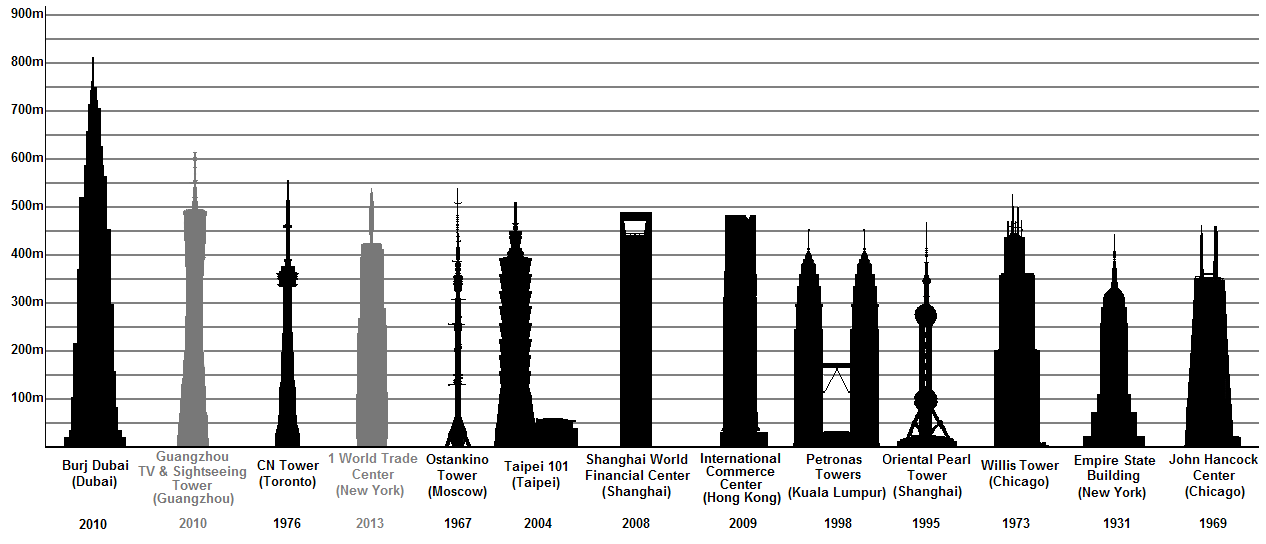Architects have been thinking about, arguing over, and adding building maintenance systems into all kind of buildings for the last couple of decades.
If you are like most architects, builders or owners of the buildings you truly care about designing a building that will be beautiful and last that way for years.
But there is a problem.
Though maintaining and keeping a building in a good condition is an essential part of the process it’s not what comes to a mind first when you think about building a prestige building.
Large buildings and especially skyscraper facades were arguably much simpler and easier to maintain when they had their windows opened. But with the innovations of glass curtain walls as a part of the building envelopes became common in the 1950s, windows became a fixed building facade. Windows didn’t open anymore and maintaining them required access from the outside, and became much harder. That created a need for building maintenance systems. At the time when buildings were designed with flat roofs and mostly straight angles it was fairly easy to accommodate maintenance equipment in the roof and design suspended platforms moving up or down on the facade.
Today building’s periodic maintenance routine is as important as ever, but designing safe and aesthetic systems to access facades has become increasingly complex and require true engineering. Think about famous Sydney Opera House, Burj Khalifa in Dubai or Petronas Twin Towers in Kuala Lumpur.

Photo by Keith Zhu
Buildings have become an art with the complex shapes and curves. Architects of these buildings have to consider facade maintenance and cleaning systems from the very beginning to make sure it’s possible to design them without sacrificing safety and looks.
In addition to complex shapes, even relatively small buildings contain many components which need regular inspection, maintenance, and repair. Most people understand that roofing systems such as heating, ventilation and air conditioning (HVAC) need periodic maintenance, but too often the facade of the building is overlooked in terms of maintenance. It’s understandable because it takes a time for many problems such as rust, spalling or sealants to develop and these problems can go unnoticed for long periods of time if there is no regular inspection and maintenance process.
That’s why a comprehensive and regular maintenance program is a key factor in keeping a building in shape and safe. To execute inspections and maintenance it’s crucial to have a facade access systems that are well designed to enable effective work on the heights.
Washing skyscraper windows
To make the case simple let’s talk about window cleaning only because it’s at the heart of the building’s periodic maintenance routine. Most windows need to be washed 2-4 times a year. There are experiments with automated cleaning robots etc. but still today nearly all of this work is done by hand. Cleaning the windows of skyscraper takes a long time. Depending on the shape and height of the skyscraper washing windows will take anything from weeks to months of work from a team of professionals.

World’s tallest building Burj Khalifa is 829,8m high and has 24 830 windows. When the building was cleaned in 2012 a team of 36 people needed three months to wash it. That’s about 17 000 hours of work!
Another example is Petronas Towers, a symbol of the Malaysia. It takes two months to wash all 32 000 windows of the whole complex. When workers have finished washing they go back to the top and begin the same work again.
These examples are only window washing and in addition to that comes all the other maintenance work. This should prove that maintenance programs should be well planned and budgeted. Designing and acquiring building maintenance systems is mainly one-time project which should be done with the ongoing maintenance in mind. Well designed and engineered systems will cost more but the return on investment can be calculated quite easily.
Inspection and maintenance
In addition to window cleaning facade maintenance and inspections should include taking care of:
- Damaged windows or glass
- Rust marks at steele locations
- Eroded mortar
- Spalling or efflorescence on brick
- Cracks in concrete or masonry
- Corroded lintels
- Rusted window frames
- Parapet deterioration
- Condensation on glass
- Sealants at expansion joints
- Bulbs and light signs
- Solar panels
- Green roof and walls
If inspections are done regularly it’s possible to correct minor problems before they become major ones. By doing this the lifespan of the building components can be extended and most importantly the safety won’t be risked failures without warning shouldn't occur. Regular inspections will also identify problems and materials approaching the end of their lifecycle and replacements or service can be scheduled and budgeted in advance.
Conclusion
An increasing number of buildings don’t have straight sides anymore and as a result, more engineering is needed to design proper systems to guarantee safe and easy access to facades. As a result, architects must select a facade access solutions and technologies that will work with the buildings specific shapes, and this needs to be done at an early stage of design.
By doing this it’s possible to design solutions which will not only blend into a building but also save a lot of time and money when regular maintenance is done for years.
